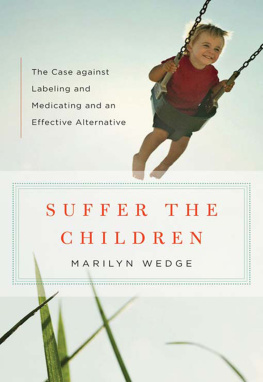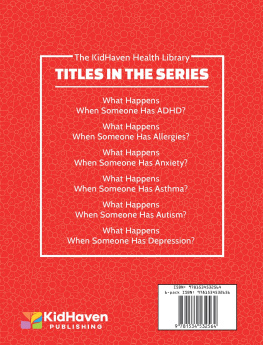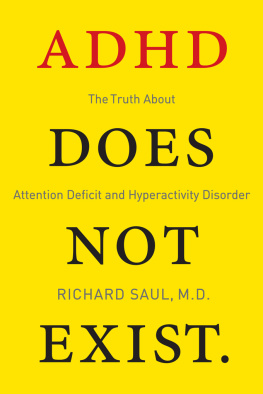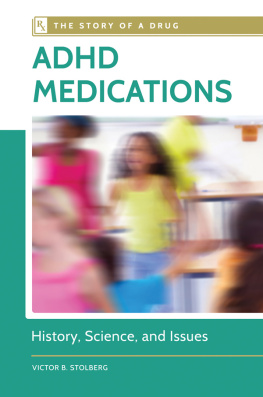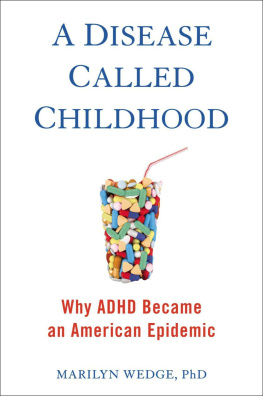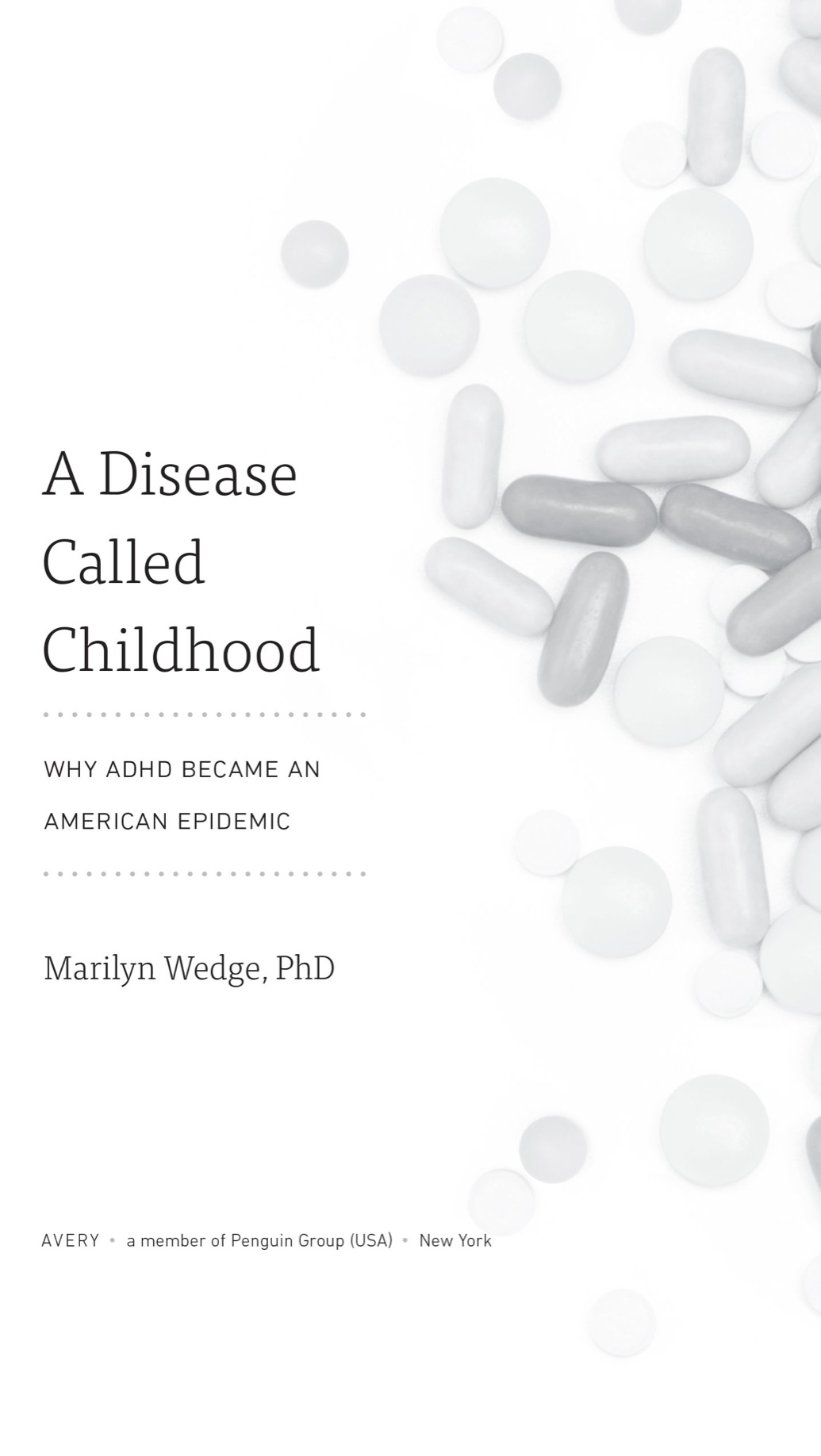In order to uphold therapist-client confidentiality, I have changed the names and identifying features of the clients mentioned in this book. The processes and outcomes of the therapy sessions are real. Family therapy relies for its integrity on the accuracy of case studies. The people and conversations I relate are composites that I have adapted conceptually from a number of individual cases from my twenty-five years of practice. Any resemblance of the composite characters or therapies to any actual person is entirely coincidental.
INTRODUCTION
A Season in Childhood
In 1988, when I started my practice as a child therapist, I had barely heard of attention-deficit/hyperactivity disorder, or what is typically called ADHD. The diagnosis had arrived on the scene a year earlier, in the third revised edition of the Diagnostic and Statistical Manual of Mental Disorders (DSM-III-R), the book doctors use to diagnose mental disorders in children and adults. Previous iterations of the manual had identified various types of hyperactivity and attention problems in children, including attention deficit disorder (ADD), the precursor to ADHD, in 1980. But this was the first time the term ADHD as we know it today appeared. According to the DSM, to warrant a diagnosis of ADHD, a child had to exhibit eight symptoms of hyperactivity, inattentiveness, or impulsivity (from a checklist of fourteen) for at least six months. The checklist included things such as is easily distracted or often interrupts or intrudes on others.
Despite its codification in the DSM, at the time ADHD was not widely discussed among child therapists, let alone parents, teachers, and pediatricians, as it is today. Psychoanalytically minded child therapists (those inspired by the work of Sigmund Freud) saw childrens problems as the expression of inner conflicts, while family systems therapists like me considered kids problems responses to stressful situations in their social context: at home, at school, or with their friends. We saw no reason to formalize a diagnosis for behavior that child therapists had been successfully treating for years. So we ignored it.
For a while, that was fine. From the time I started my practice until the middle of the 1990s, not one mother or father ever asked me if I thought their child had ADD or ADHD. If their childs behavior changed, parents assumed something was worrying or stressing their child. They came to me to discover the source of stress.
From my point of view, behavioral problems such as aggression, disobedience, or other behaviors commonly associated with ADHD, such as inattention and hyperactivity, are signs that something is wrong in a childs lifeeither extreme trauma, like abuse or poverty, or something more typical, like a lack of discipline or a difficult family transition. Children are not fully developed mentally or behaviorally. Negative emotions that arise from lack of structure or difficult circumstances in their environments usually manifest themselves in their behavior, since children are not equipped to express themselves directly. I was used to treating childrens symptoms as responses to rough patches in their family life or troubled relationships with friends or at school. I helped children cope with sadness or anxiety, compulsive behaviors or aggressiveness, inattentiveness at school or moodiness at home by discovering the cause of the childs distress.
Of course, I saw plenty of children who were jumpy, disruptive, fidgety, oppositional, or uninterested in school. In these cases, parents generally came to me to ask if I could help them keep the behavior in check, sometimes after a teacher had complained that a child was interrupting class or refusing to do assignments. I typically came up with behavioral solutions for these kids. I advised parents to create a solid plan for discipline, to stay calm, not to yell, to give their child time to mature, to reward good behavior, to invoke consequences for mischief, and so forth. At times, I attended a meeting at the childs school and worked with the childs parents, teacher, and school counselor to find specific ways to help the child in the classroom. For particularly active kidsmore often boys than girlsI recommended that parents enroll them in a sport or encourage them to ride their bikes as an outlet for their extra energy. Even in cases where something specificsuch as divorce, a parents injury or illness, or another disruption in the childs lifewas causing the distress, I could usually work with parents and children to address the problem, talk to the child, and figure out a way for them to move past it. These techniques usually worked.
Not every misbehavior was rooted in a troubling situation at home. In those days, some degree of naughtiness and wildness was tolerated and even expected in children, especially in boys. If parents had a little Dennis the Menace at home, well, that was just boys being boys. Impulsive, distractible kids who occasionally rebelled against the authority of adults were considered naughty but normal. Nobody would have suggested that Dennis the Menace or Beaver Cleaver had a mental disorder that required medication. Nobody would have suggested that Huck Finns chronic truancy was the sign of a mental illness. A teaspoon of discipline, not a dose of psychiatric medication, was the cure for naughty children. Most people thought the only disease that afflicted kids like that was called childhood.


